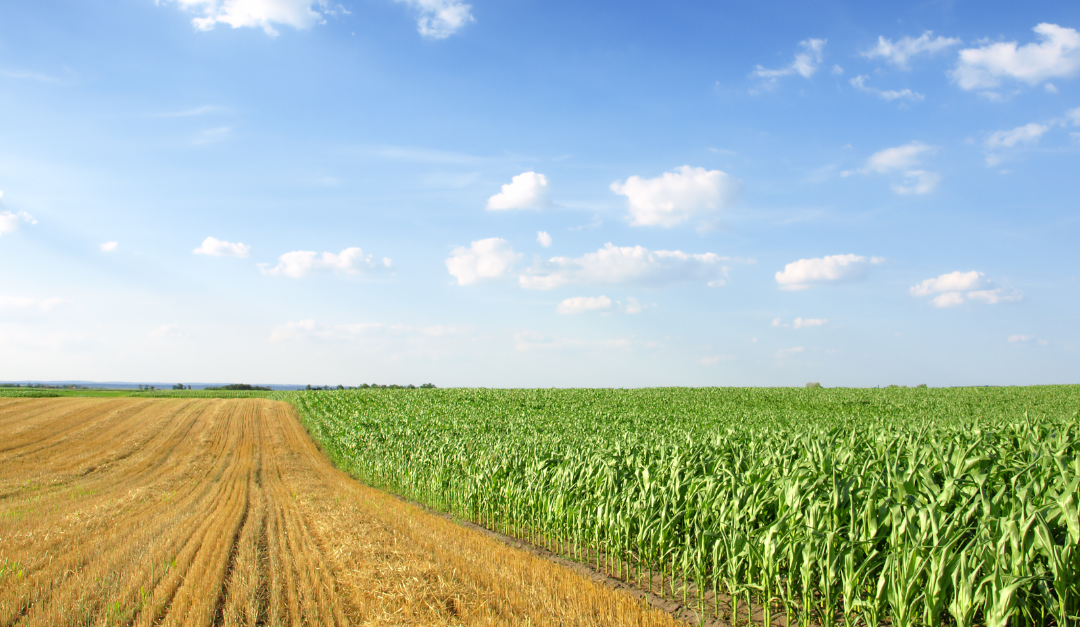Investing in agricultural land is a unique and often undervalued form of real estate investment. It attracts the attention of investors looking for stability, diversification and long-term potential. In this introduction, we dive into what it means to invest in farmland and why it can be an attractive option.
The Unique Character of Farmland
Agricultural land is distinguished from other real estate investments by its intrinsic value: it is the basis of food production and therefore always has a certain value stability. Unlike commercial or residential real estate, the value of agricultural land is less sensitive to economic cycles. After all, food is a basic need, so the demand for agricultural products remains relatively constant even in times of economic downturn.
Growing Popularity in Portfolios
In recent years, farmland has gained popularity among investors. This is partly due to the growing world population and increasing demand for food. In addition, investing in farmland offers opportunities for diversification. It offers natural protection against inflation and is less correlated with traditional asset classes such as stocks and bonds, making it an excellent way to diversify risk in a portfolio.
Historic Valuation
Historically, agricultural land has shown a steady increase in value. The limited availability of fertile land and increasing demand for food production have led to long-term growth in the value of farmland. This makes it an attractive option for investors looking for sustainable growth over a longer period of time.
Investing through Platforms such as Immotokens
With the rise of digital platforms such as Immotokens, it has become easier for investors to get into farmland. These platforms often offer detailed information on available farmland, including location, soil quality, and historical yield data. Moreover, they make it possible to invest with smaller amounts, significantly lowering the barrier to entry for individual investors.
Investing in farmland offers a unique combination of stability, potential for capital appreciation, and diversification. As part of a balanced investment portfolio, farmland can be a smart choice for the forward-thinking investor. In subsequent sections of this article, we will take a closer look at how to select the right farmland, the financial and legal aspects of such investments, and how to manage risk when investing in this sector.
Table of contents
- Why invest in Farmland?
- Stability and historical appreciation.
- Comparison with other real estate sectors.
- Role in diversification of investment portfolios.
- Choosing the Right Farmland
- Location and accessibility.
- Soil quality and agricultural capacities.
- Water rights and natural resources.
- Regulation and zoning.
- Financial Considerations
- Cost analysis (purchase, maintenance, taxes).
- Return expectations.
- Impact of economic cycles on agricultural land.
- Rental of agricultural land
- How to find reliable tenants?
- Drafting a lease: what should it contain?
- Management and maintenance of leased agricultural land.
- Legal and fiscal aspects
- Property rights and transfer procedures.
- Tax benefits and obligations.
- Environmental legislation and compliance.
- Risks and pitfalls
- Market risks and natural risks.
- Legal and regulatory changes.
- Risk management tips.
- Future prospects of Farmland Investment
- Impact of technological developments.
- Trends in sustainability and organic farming.
- Demographic change and food security.
1. Why invest in farmland?
As a real estate specialist, we recognise the growing interest in farmland as an investment option. This article will explore the reasons behind this trend, including stability and historical appreciation, comparison with other real estate sectors, and the role of farmland in diversifying investment portfolios.
Stability and Historic Valuation
Agricultural land is known for its stability and resistance to economic fluctuations. This is largely because the demand for food, and hence agricultural production, is consistent regardless of economic conditions. Historically, farmland has also shown a reliable appreciation in value. With limited availability and an increasing global population, demand increases, leading to steady growth in value. This growth is often stable and predictable, unlike the sometimes volatile property market.
Comparison with Other Real Estate Sectors
Compared to residential and commercial properties, agricultural land offers some unique advantages. These sectors can be sensitive to economic changes, such as a recession, which can affect rents and occupancy rates. Agricultural land, on the other hand, is less sensitive to such fluctuations. Moreover, while residential and commercial properties require ongoing investment for maintenance and improvements, farmland requires relatively less intensive management.
Yield comparison
- Farmland: Historically, agricultural land has shown a steady increase in value. According to some studies, annual returns can range from 3% to 5%, depending on location and use.
- Residential Property: Average annual returns for residential property can vary, but are often around 3% to 4% in Belgium, depending on location and market conditions.
- Commercial Property: This type of property may offer higher yields, sometimes up to 6% to 8%, but with higher risk and volatility.
Benefits of Farmland
- Stable Investment: Less sensitive to economic fluctuations than residential or commercial property.
- Consistent Value Added: Agricultural land generally shows stable and predictable value growth.
- Low Correlation with Other Asset Classes: Provides excellent diversification to reduce risk in a portfolio.
- Inflation protection: The value of farmland tends to rise with inflation, making it a good hedge.
- Lower maintenance costs: Generally requires less management and maintenance than buildings.
Disadvantages of Farmland
- Liquidity constraints: Sale of agricultural land may take longer than other real estate.
- Requires Specific Knowledge: Knowledge of agriculture and local market conditions is essential.
- Sensitive to environmental and regulatory risks: Exposed to environmental legislation and changes in agricultural subsidies.
- Accessibility and Use: Not every farmland is easily accessible or immediately usable for all types of agriculture.
Role in Diversification of Investments
Diversification is a crucial concept in investing, and farmland can play a valuable role in a diversified investment portfolio. Due to its low correlation with traditional asset classes such as stocks and bonds, investing in farmland can help reduce the overall risk of a portfolio. This diversification can provide protection against market volatility, as the value of farmland is not directly linked to equity and bond markets.
Potential Traps and Considerations
While investing in agricultural land is attractive, there are some considerations and potential pitfalls. It requires knowledge of agriculture and the specific characteristics of land, such as soil quality and water rights. Moreover, the illiquid nature of the investment can be challenging, as selling farmland can take more time than other types of property.
2. Choosing the right farmland
Investing in farmland can be a rewarding venture, but success depends heavily on making the right choices when buying. Below are the key factors leads when selecting farmland: location and accessibility, soil quality and farming capabilities, water rights and natural resources, and regulations and zoning.
Location and accessibility
- Importance of Location: The location of agricultural land affects many aspects, such as price, access to markets, and the type of crops that can be successfully grown. Consider proximity to transport networks and market places.
- Accessed: Good access roads are essential for transporting agricultural products. Difficult to access agricultural land can lead to higher transport costs and operational inefficiencies.
Soil quality and agricultural capacities
- Soil tests: Conduct a thorough soil analysis to assess soil fertility and composition. This will determine which crops will grow best and the potential yield.
- Suitability for Crops: Depending on the type of crop you want to grow, the soil type required may vary. Consider crop rotation and sustainable farming practices to maintain long-term soil health.
Water rights and natural resources
- Water availability: Check water sources on and around farmland. The presence of rivers, lakes, or groundwater may be essential for irrigation.
- Water rights: Familiarise yourself with the area's water rights and regulations. Some regions may have strict restrictions on water use, which may affect farming activities.
- Other natural resources: Also consider other natural resources such as minerals, forests, or biodiversity, which may affect the value and use of the land.
Regulation and zoning
- Zoning plans: Check local zoning and agricultural policies. These may affect what you are allowed to do with the land, including the types of crops you can grow and any building restrictions.
- Environmental legislation: Understand the environmental laws in the area, especially regarding agricultural practices, pesticide use and waste management. Compliance with these laws is crucial to avoid fines and legal problems.



